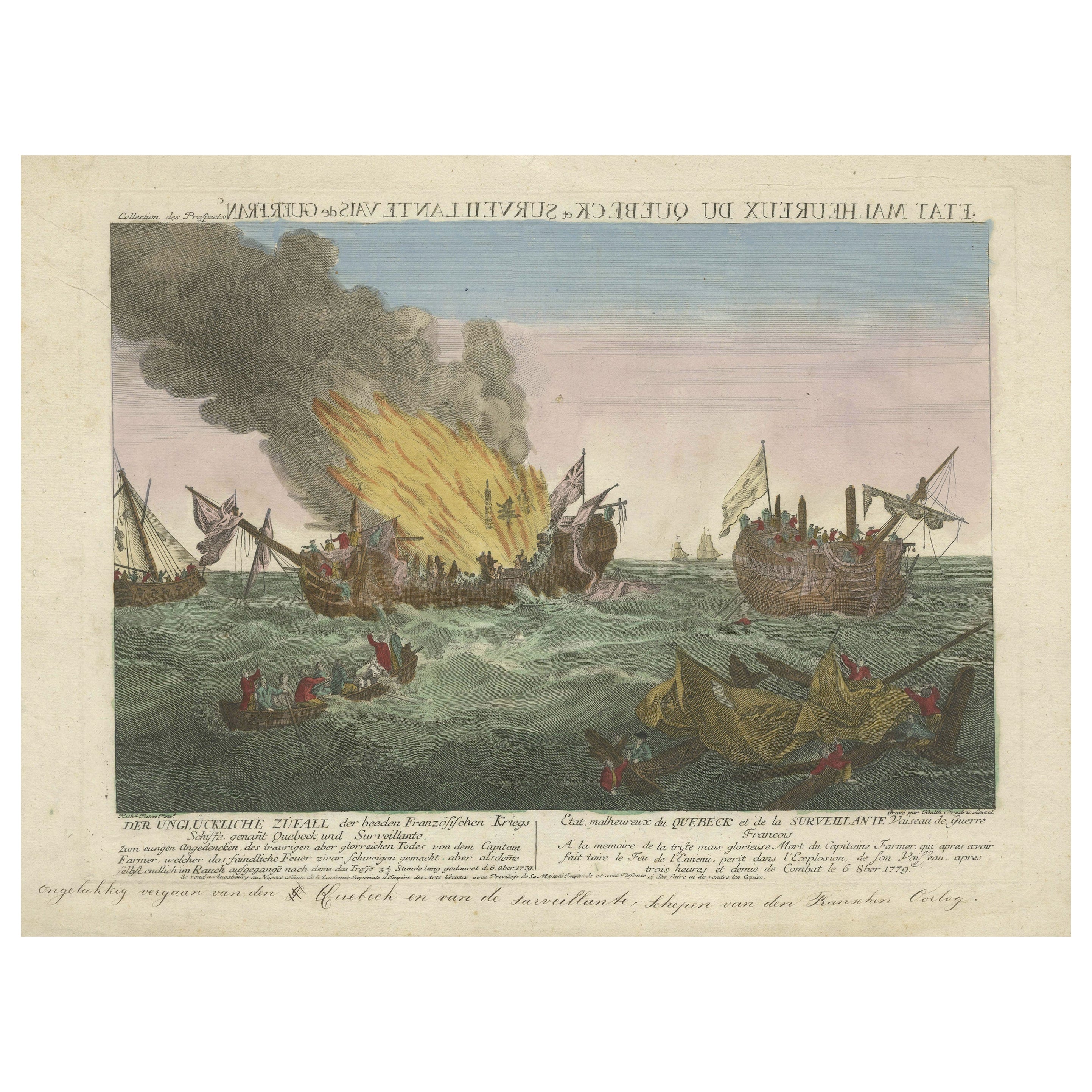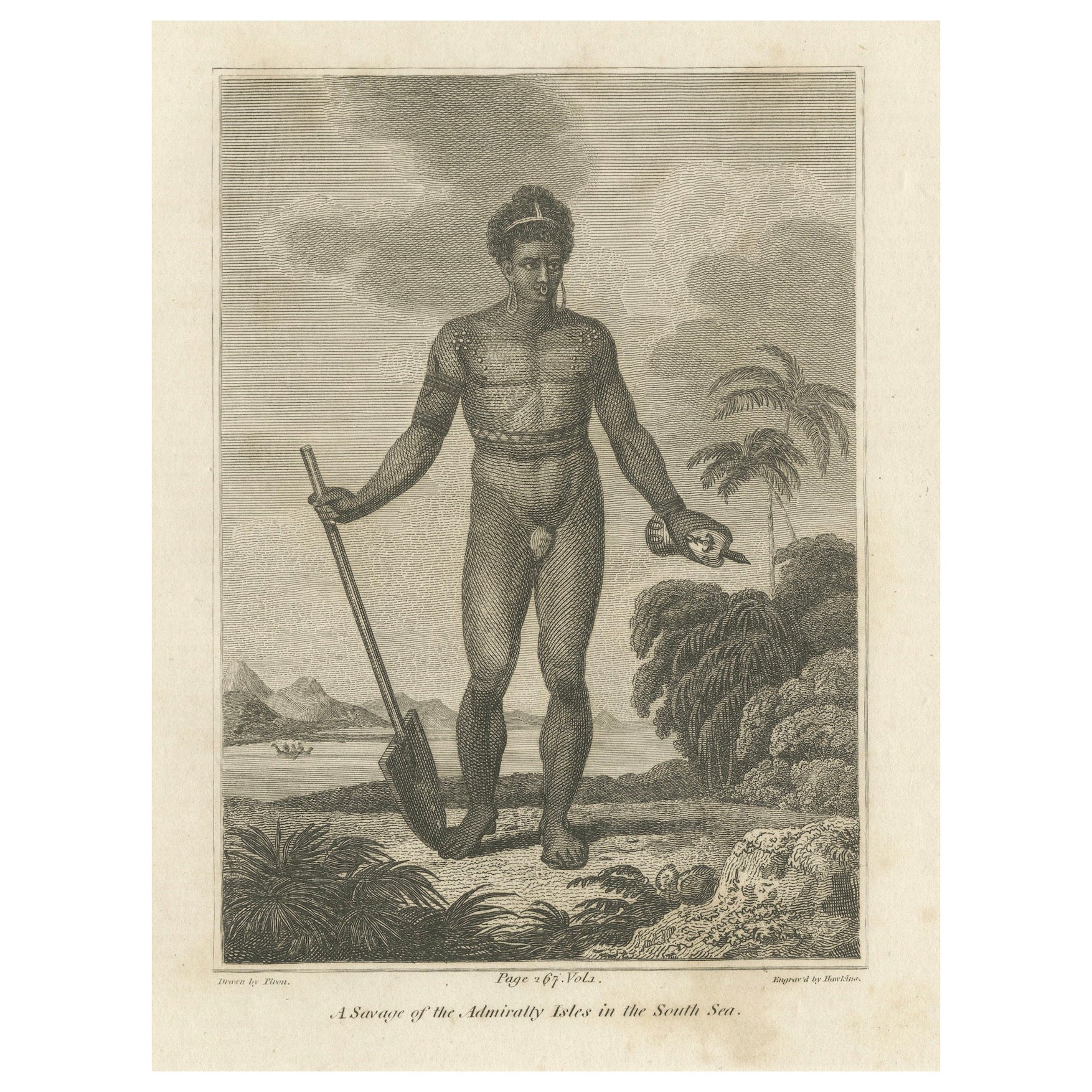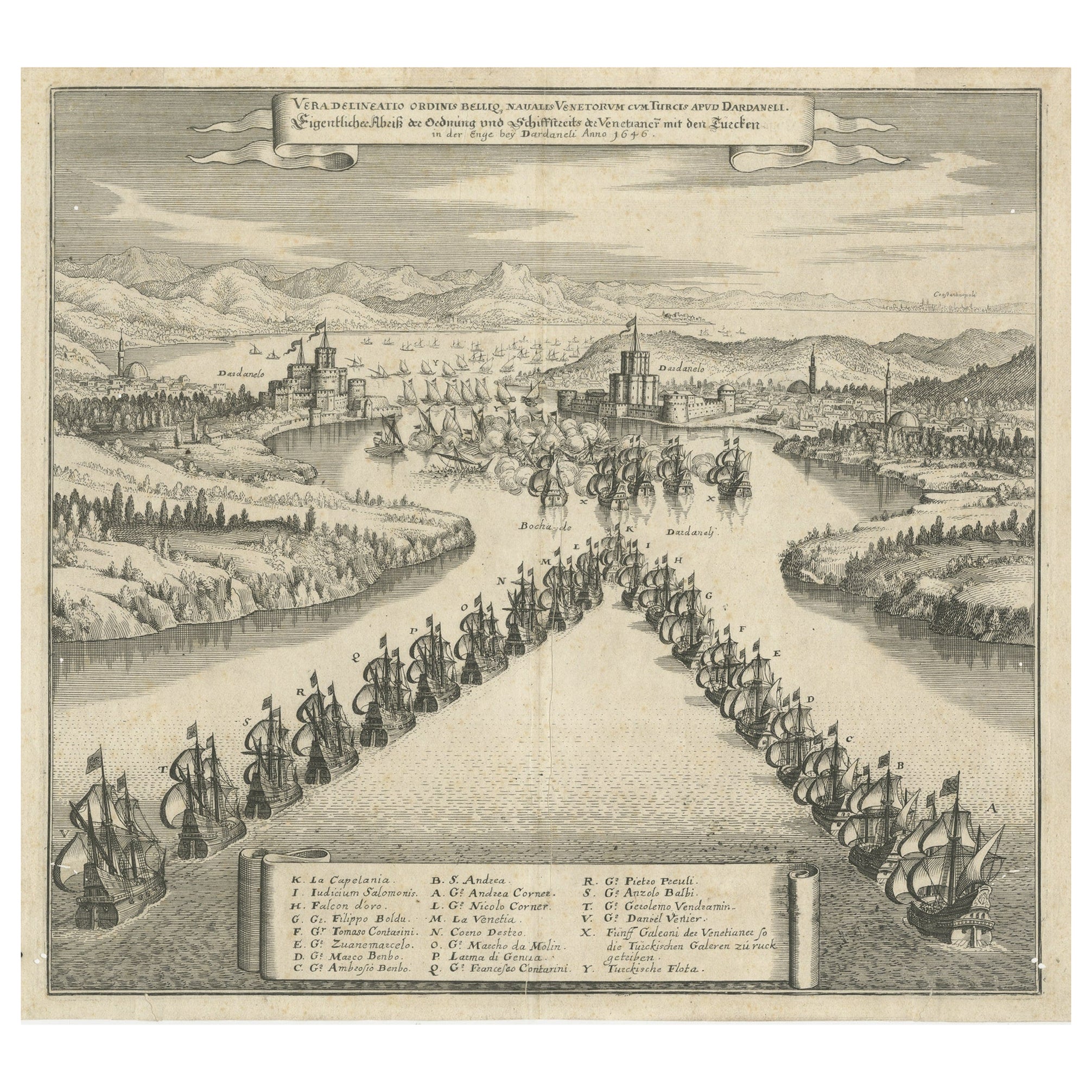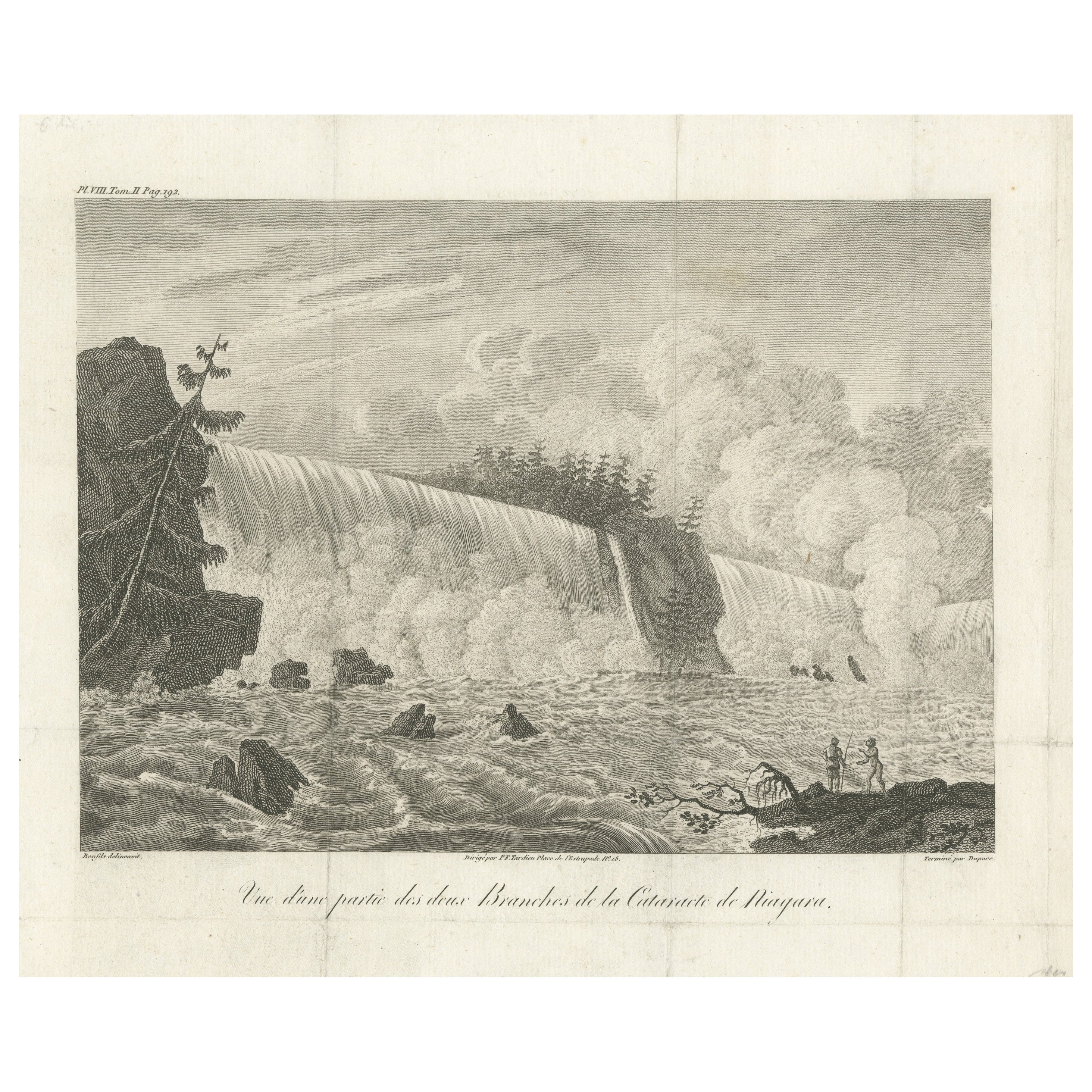Items Similar to "The Battle of Bunker's Hill, Near Boston" Engraving by James Mitan, 1801
Video Loading
Want more images or videos?
Request additional images or videos from the seller
1 of 6
"The Battle of Bunker's Hill, Near Boston" Engraving by James Mitan, 1801
About the Item
This dramatic Revolutionary War engraving of the Battle of Bunker Hill is after the famous 1785 oil-on-canvas by John Trumbull. Capturing the intensity of the battle, the engraving centers on Major John Small restraining a “lobster-back” from bayoneting Major General Joseph Warren. Warren lies mortally wounded in the midst of chaos around him. In the background, British forces are seen cresting the last defenses of the brave, yet green army of Colonial soldiers.
The Battle of Bunker Hill was fought on June 17, 1775, in the early stages of the American Revolutionary War. The battle is named after Bunker Hill in Charlestown, Massachusetts. Although it was the original objective of both the Colonial and British troops, the area was only peripherally involved in the battle. Rather, the majority of the combat took place on the adjacent Breed’s Hill. The battle pitted a more organized British force against a young and inexperienced American militia.
Although considered a tactical victory for the British, it came at the cost of considerable casualties, including a large number of officers. The battle demonstrated that the inexperienced American militia was able to stand up to the British army troops in battle. The battle results discouraged the British from any further frontal attacks against well-defended front lines. American casualties were comparatively fewer, although their losses included Gen. Joseph Warren.
During the battle, the patriot-turned-painter John Trumbull (1756-1843) was stationed in Roxbury on the far side of Boston, where he could hear the sounds of fighting. In late 1785, Trumbull decided to devote himself to the depiction of Revolutionary War scenes, a series of eight epic pictures. From the beginning, Trumbull intended for the paintings to be later engraved for sale. Trumbull began the oil-on-canvas of The Death of General Warren at the Battle of Bunker’s Hill and The Death of General Montgomery in the Attack of Quebec, in the studio of Benjamin West in London. Bunker’s Hill was completed in March 1786; Trumbull started Attack of Quebec in February 1785 and finished it before he brought it to Paris in 1786. He then started The Declaration of Independence at Thomas Jefferson's house in Paris.
As soon as Bunker’s Hill was completed, Trumbull searched for a suitable engraver in London. He was unsuccessful, as many British engravers were nervous about engraving an American battle scene. He thus turned to Paris, Germany, and the Low Countries in hopes of finding an artisan skilled enough to engrave his epic series. Discouraged and still without a competent engraver to take his oils to the intaglio plate, Trumbull returned to the United States in November 1789. He temporarily worked on portraits and side projects. Almost ten years later, in 1798, The Battle of Bunker’s Hill was finally engraved by Johann Gotthard von Mueller (1747-1830) and published by Antonio C. de Poggi in London. Introduced to de Poggi through Benjamin West, Trumbull notes meeting "an Italian artist, by the name of Antonio di Poggi, of very superior talents as a draughtsman, and who had recently commenced the business of publishing."
Due to the success of the first 1798 engraving by Johann Gotthard von Mueller, several later printings of the scene were published, including this 1801 print engraved by James Mitan. Mitan was an English engraver who studied with Thomas Cheesman (1760-1834). The Mitan engraving is almost identical to the original, save for some small changes in the title margin. This print was published for both the American and French populace. France was a great ally to the Americans during the Revolution, and given their strong diplomatic relationship, prints of the Revolution were very popular in Paris.
By creating engravings of his paintings, Trumbull spread his conventional heroic pictures to audiences and consumers far beyond those who might see the original painting. As Trumbull wrote to John Eliot, “by having prints done… to bring them within the powers of our American purses,” the artist popularized the republican tradition of public memory, and in the process he envisioned a nation that encompassed both the reverence of heroes and popular participation. Trumbull wrote, “Historians will do justice to an area so important; but to be read, the language in which they write must be understood – the language of Painting is universal, and intelligible in all nations, and every age.”
Condition:
In good condition overall. Engraving. Paper has some foxing and minor wear. Older mount remnants on verso. An early inked French gallery stamp in lower margin. London: A.C. de Poggi, 1801. Print measures: 17 ½” H x 22 ½” W.
Framed in a custom-built archival frame with acid-free mats, UV Conservation Clear glass, and a hand-built wooden frame. Framed dimensions: 31 5/8” H x 36 1/4” W x 2 3/4” D.
- Creator:John Trumbull (Artist)
- Dimensions:Height: 31.63 in (80.35 cm)Width: 36.25 in (92.08 cm)Depth: 2.75 in (6.99 cm)
- Style:Federal (Of the Period)
- Materials and Techniques:Paper,Engraved
- Place of Origin:
- Period:
- Date of Manufacture:1801
- Condition:Additions or alterations made to the original: New custom archival framing by Art Source International in Boulder, Colorado in January of 2023. Wear consistent with age and use.
- Seller Location:Colorado Springs, CO
- Reference Number:
About the Seller
4.9
Platinum Seller
These expertly vetted sellers are 1stDibs' most experienced sellers and are rated highest by our customers.
Established in 2010
1stDibs seller since 2011
400 sales on 1stDibs
Typical response time: <1 hour
- ShippingRetrieving quote...Ships From: Colorado Springs, CO
- Return PolicyA return for this item may be initiated within 10 days of delivery.
More From This SellerView All
- “The Restaurant of the House of Representatives” Engraving by Harper's WeeklyLocated in Colorado Springs, COThis original wood engraving is titled “The Restaurant of the House of Representatives, Washington, DC.” It was published as a double-page image, in the August 12, 1893 issue of the famous 19th century newspaper Harper’s Weekly. The print was illustrated by Charles Stanley Reinhardt. The House Restaurant, a unique part of life in the Capitol, has been in the same location since the 1857 Capitol Expansion. Congressional members’ busy work schedule made the availability of food on site a necessity. But the restaurant also served as an informal meeting spot for members to continue conversations and deal making. This 1893 print illustrates the convivial atmosphere. Details including elegantly dressed tables...Category
Antique 1890s American Prints
MaterialsPaper
- "A Difficult Bunker" by Douglas Adams, Photogravure, Circa 1894By Douglas AdamsLocated in Colorado Springs, COPresented is a handsome photogravure of "A Difficult Bunker" by sporting artist Douglas Adams. "A Difficult Bunker" is one in a famous trio of three paintings depicting the links at ...Category
Antique 1890s English Late Victorian Prints
MaterialsPaper
- 1876 "Gettysburg, The Repulse of Longstreet's Assault." EngravingLocated in Colorado Springs, COPresented here is an 1876 engraving of John B. Bachelder and James Walker’s Gettysburg. The Repulse of Longstreet’s Assault. The engraved scene depicts the decisive battle on the final day of the Battle of Gettysburg. Researched by the photographer and topographer John B. Bachelder and painted by James Walker, the original painting was created in 1870. This detailed engraving was done by H. B. Hall Jr. and published by James Drummond Ball. Otherwise called Pickett’s Charge, the battle occurred on July 3, 1863. Pickett’s corp commander, Lieutenant General James Longstreet was placed in charge of the attack despite his hesitations. Longstreet’s central role led to the title of the work, Repulse of Longstreet’s Assault. In an attempt to gain control of an important supply route, nine Confederate brigades charged across three-quarters of a mile of open ground against cannon fire to take Cemetery Ridge from the defending Union Army. Despite their overwhelming numbers, the Confederate forces were repelled with considerable casualties marking not only a decisive victory for the Union, but also the beginning of the slow defeat of Lee’s Army. The furthest the charging forces advanced before being repulsed would forever be known as the “High Water Mark of the Confederacy.” The Confederate army never recovered from the losses at Gettysburg and it effectively ended Lee’s campaign into Pennsylvania. The engraving gives the perspective from the Union rear, one that encompasses most of the battlefield, from Big Round Top on the left to the northern reaches of Cemetery Ridge on the right. The Confederate lines at Seminary Ridge are in the far distance, partially obscured by bursting shells. The image centers on the main Confederate assault, in the vicinity of what today are known as "The Copse" and "The Bloody Angle." The composition has elemen...Category
Antique 1870s American Prints
MaterialsPaper
- "The Bicester & Warden Hill" by Frank Stewart, Vintage Signed Print, 1935By Frank Algernon StewartLocated in Colorado Springs, COPresented is an original fox hunting print signed by the artist, Frank Algernon Stewart (1877-1945). This print depicts one of England’s most famous fox hunting events, the Bicester and Warden Hill Hunt. The scene depicts six men on horseback galloping across a field in mid-hunt. All coloring is still intact, with lush green fields and bright riders’ jackets. As evidenced here, Stewart’s renderings of horseback hunts are some of the most celebrated and collected in the world. The beginnings of the Bicester Hunt started around the 1790s when John Warde Esq. bought a set of hounds and hunted in the Bicester area, with the main kennels located at Bainton. He hunted for 18 seasons. The first master of the Bicester Hunt was Sir Thomas Mostyn...Category
Vintage 1930s English Prints
MaterialsPaper
- 1864 "Proclamation of Emancipation, " Antique Engraving by Charles ShoberLocated in Colorado Springs, COThis 1865 engraving features the Emancipation Proclamation in elaborate calligraphic text, with five patriotic vignettes and a small portrait...Category
Antique 1860s American Historical Memorabilia
MaterialsPaper
- 1902 "In the Sand" Photogravure by James Michael Brown from Sporting PicturesLocated in Colorado Springs, COPresented is a color photogravure by James Michael Brown entitled “In the Sand”. The print depicts two golfers with their young caddies on the historic St. Andrews golf course. One p...Category
Antique Early 1900s American Prints
MaterialsPaper
You May Also Like
- Rare Engraving of a Famous Battle Near Ushant Between the French and BritishLocated in Langweer, NLAntique print titled 'Der ungluckliche Zufall der beeden Frazösischen Kriegs (..) - Etat malheureux de Quebeck et de la Surveillante (..)'. An engraving of a painting by Richard Paton of the three and a half hour long naval battle of 6 October 1779 which was fought off Ushant between HMS Quebec, under the command of Captain George Farmer, and the Surveillante, under the command of Captain Couédic de Kergoaler. The Quebec caught fire and exploded, and the British crew were rescued by the French. Captain George Farmer (b.1732) died in the battle. American War of Independence...Category
Antique Late 18th Century Prints
MaterialsPaper
- The Khoikhoi of Southwestern Africa, Original Engraving of circa 1801Located in Langweer, NLThe print is an early 19th-century engraving depicting the Khoikhoi people, historically referred to as the Hottentots, which is an outdated term. The Khoikhoi are indigenous inhabit...Category
Antique Early 1800s Prints
MaterialsPaper
- Engraving of A Savage of the Admiralty Isles in the Bismarck Archipelago, 1801Located in Langweer, NLThe 1801 engraving depicts a figure labeled as "A Savage of the Admiralty Isles in the South Sea." The image portrays a solitary indigenous man standing with a paddle in hand, exudin...Category
Antique Early 1800s Prints
MaterialsPaper
- B.West Engraving "Naval Battle, Battle of the Houge" 18th CenturyLocated in Beuzevillette, FRThis magnificent engraving is entitled "Battle of La Hougue" by the engraver E.C Voysard after Benjamin West. It depicts the Battle of Barfleur- La Hougue,...Category
Antique 18th Century French Prints
MaterialsPaper
- Copper Engraving by Merian of The Battle Fleet off Constantinople, 1646Located in Langweer, NLAn engraving by Matthäus Merian senior depicting the "Sea battle of the Venetians against the Turks in the Dardanelles" from 1646 . It presents a dramatic and detailed scene capturi...Category
Antique 1640s Prints
MaterialsPaper
- Rare French Engraving of the Niagara Waterfalls in Ontario, Canada, 1801Located in Langweer, NLTitle: Vue d'une partie des deux Branches de la Cataracte de Niagara. Dirigé par P.F. Tardieu, Place de l'Estrapade No. 18. Upper Left: Pl.VIII, Tom.II Pag.192. Lower Left: Bonfil...Category
Antique Early 1800s Prints
MaterialsPaper
Recently Viewed
View AllMore Ways To Browse
Engraved Intaglio
French American Colonial
Antique Colonial House
Early American Furniture 1800
American War Independence
American War Of Independence
Pictures Of Foxes
Antique Federal Glass
Epic Antique
Italian Remnant
Antique Bayonets
Wooden Plate Stand
Federal Colonial American
American British Colonial
Lobster Purse
Thomas Battle
First Gen
Wooden Printing





